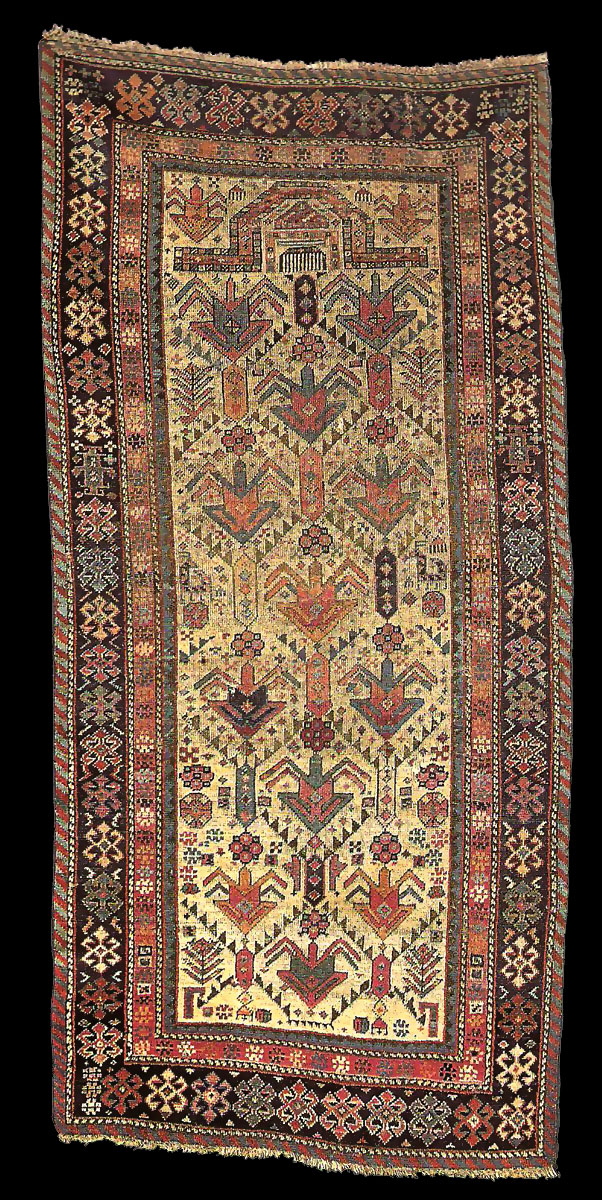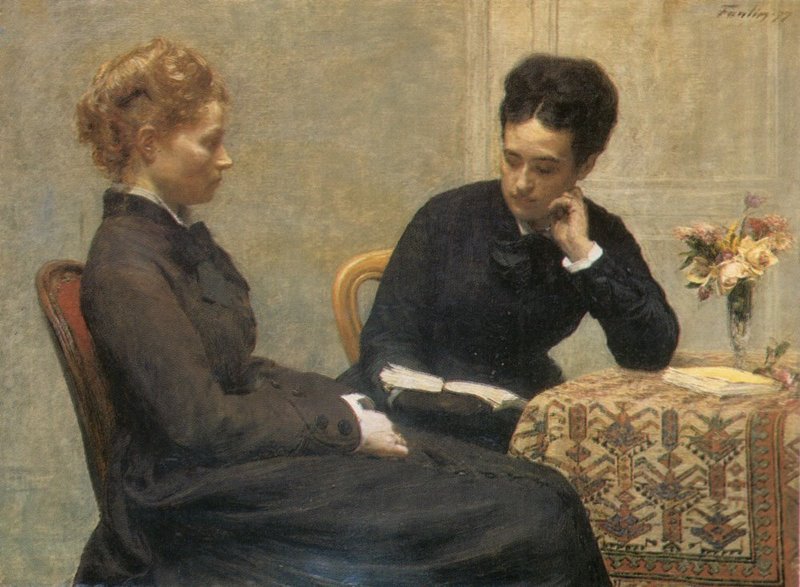|
c. 1860, 81x168cm (2'8" x 5'6")
A distinctive feature of this rug is its field pattern of 'rising' palmettes.
This design occurs primarily in Shirvans, Daghestans and, more rarely, Kubas.
Two basic versions exist. In one version, arguably the earlier, the
palmettes resemble floral shields; Ian Bennett has proposed that this
pattern may be connected to the stylized lotus palmettes of
eighteenth-century Caucasian 'Shield' carpets, which may be from Shirvan. In
the other (possibly later) version, as seen here, the pattern is highly
stylized (Bennett has likened these palmettes to huge insects. Not even-one
agrees with Bennett's evolutionary theory; an example owned by Eberhart
Herrmann and featuring the 'stylized' version is dated c. 1800 and assigned
to Kuba (see analogies).
The rug shown here is missing its outer guard border. The red and blue
barber-pole stripe framing the rug is unusual, and cochineal dye is used
extensively. All of the brown is camel hair, which points to a southern
Shirvan origin. An example with a similar field was depicted in an 1877
painting by Henri Fantin-Latour, now in the Musee des Beaux-Arts in Lyon).
Warps: white wool, Z2S, 18 threads per inch (72 per dm)
Wefts: white wool, between 2 and 4 shoots, 9 knots per inch (36 per dm)
Pile: wool and camel hair, symmetrical knot, 81 knots per sq. inch (1296
knots psd)
published at Ralph Kaffel's Caucasian Prayer Rugs as plate 81

H

The Reading (La Lecture in French) is a painting by French painter Henri
Fantin-Latour in 1877
|


